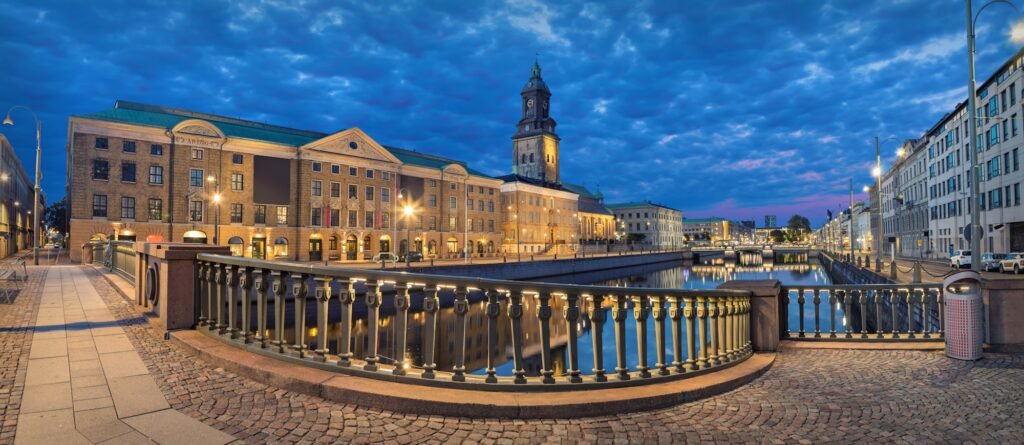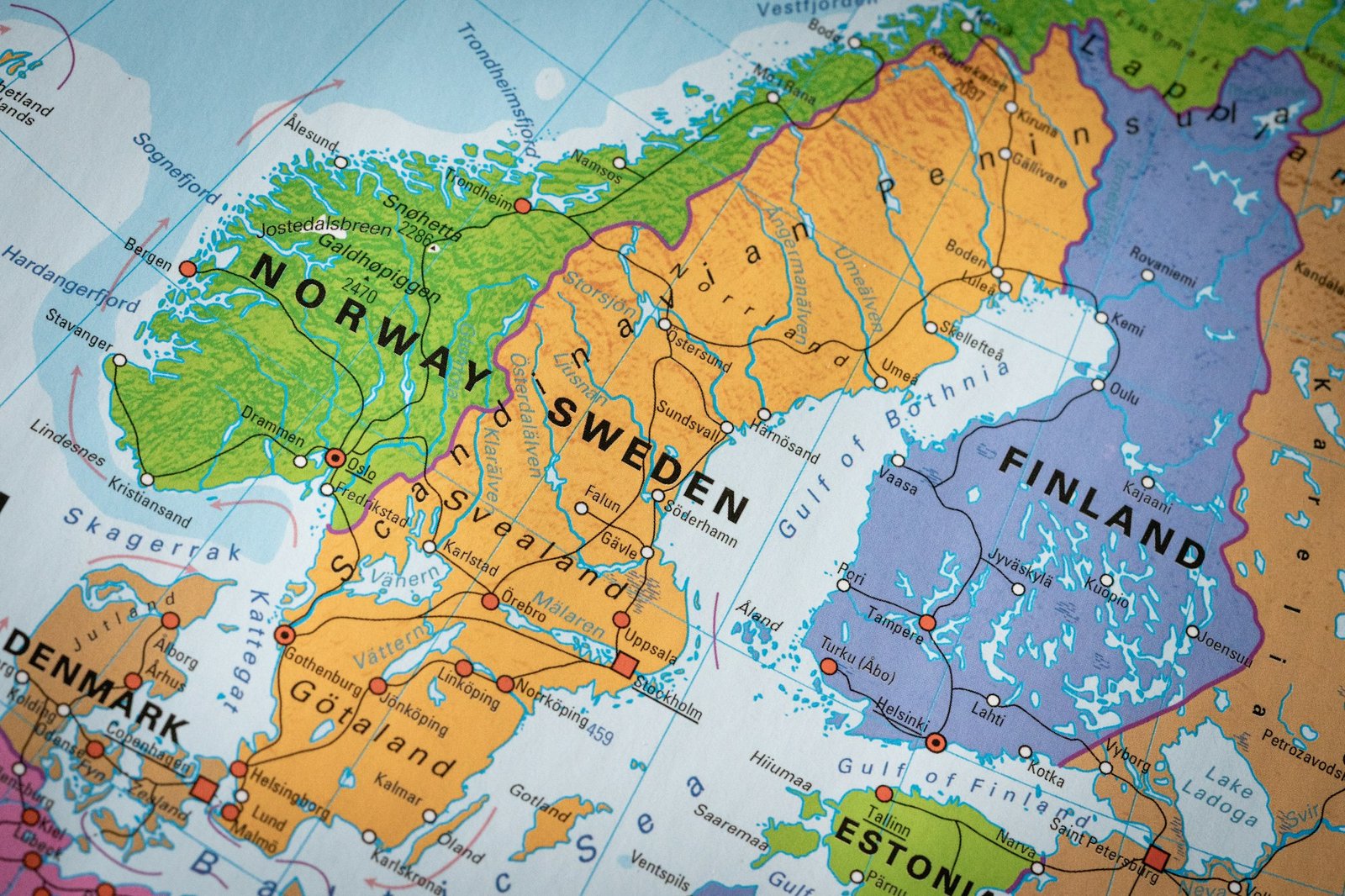Choosing Your Mode of Transportation
When planning a trip to Sweden, selecting the right mode of transportation is crucial for a smooth and enjoyable journey. There are several options to consider, each offering unique advantages depending on your preferences and starting location.
Air travel is often the most convenient and fastest way to reach Sweden. The country is well-served by several major international airports, including Stockholm Arlanda (ARN), Gothenburg Landvetter (GOT), and Malmö Airport (MMX). These airports are hubs for numerous international airlines, making it easy to find flights from various global destinations. Major carriers such as SAS, Lufthansa, and British Airways operate regular flights to Sweden, ensuring a wide range of options for travelers.
If you prefer a more scenic route or are traveling from a neighboring country, consider taking the train. Sweden has an efficient and comfortable rail network, with services like the SJ trains offering a convenient and eco-friendly way to travel. The Oresund Bridge connection from Denmark provides a seamless transition for those coming from Copenhagen, allowing you to enjoy the picturesque landscapes along the way. Additionally, trains from Norway and Germany also offer direct routes to major Swedish cities, making train travel a viable option.
For those who enjoy maritime travel, ferry services present an appealing alternative. Ferries operate from several countries, including Germany, Poland, and Finland, providing a leisurely and scenic voyage to Sweden. Companies like Stena Line, Viking Line, and Tallink Silja offer regular routes to Swedish ports such as Gothenburg, Stockholm, and Trelleborg. This mode of transportation allows travelers to experience the beauty of the Baltic Sea and relax before reaching their destination.
Ultimately, whether you choose to fly, take the train, or sail, Sweden’s well-connected transportation network ensures that you can reach your destination with ease and comfort. Each option offers its own unique experience, allowing you to tailor your journey to your personal preferences and travel style.
Understanding Visa and Entry Requirements
When planning a trip to Sweden, understanding the visa and entry requirements is crucial. For travelers from certain countries, including the United States, Canada, and most European Union nations, Sweden offers visa-free entry for short stays of up to 90 days within a 180-day period. This falls under the Schengen Area agreement, which Sweden is a part of. However, travelers from non-Schengen countries may need to apply for a visa before their trip.
The most common type of visa for short visits to Sweden is the Schengen visa, which allows travel within the entire Schengen Zone. To apply for a Schengen visa, you will need to submit a completed application form, a valid passport with at least three months of validity beyond your planned departure date, two recent passport-sized photos, proof of travel insurance covering at least €30,000 in medical expenses, proof of accommodation, and a detailed travel itinerary. Additionally, an application fee is required, usually around €80 for adults and €40 for children aged 6-12.
For those planning to stay longer, work, or study in Sweden, different visa categories apply. These include residence permits, work visas, and student visas. Each category has specific requirements and processes, which can be found on the Swedish Migration Agency’s official website. It is recommended to start the application process well in advance to accommodate any potential delays.
To ensure a smooth entry experience, check that your passport is valid for at least six months beyond your intended stay. Familiarize yourself with Swedish customs regulations, such as restrictions on bringing certain food items, alcohol, and tobacco. Be aware of health and safety guidelines, including any vaccination requirements or health advisories.
By thoroughly understanding the visa and entry requirements for Sweden, you can ensure a hassle-free start to your journey, allowing you to focus on enjoying the unique cultural and natural attractions that Sweden has to offer.
Booking Your Accommodation

When planning a trip to Sweden, selecting the right accommodation is crucial for a comfortable and enjoyable stay. Sweden offers an array of lodging options to suit various preferences and budgets. Whether you are looking for luxury hotels, budget-friendly hostels, cozy Airbnb rentals, or unique experiences like countryside cottages and ice hotels, you will find something that meets your needs.
Hotels in Sweden range from luxurious five-star establishments to more modest three-star options. Many hotels are centrally located, providing easy access to tourist attractions and public transportation. If you are on a budget, hostels are a viable alternative, offering affordable rates and communal amenities. Hostels are particularly popular in cities like Stockholm, Gothenburg, and Malmö.
For a more personalized experience, consider staying in an Airbnb. This option allows you to rent entire apartments or homes, often at competitive prices. Additionally, Airbnb can provide unique opportunities to stay in less touristy neighborhoods, giving you a more authentic experience of Swedish life.
If you are looking for something truly special, Sweden is famous for its unique accommodations. Countryside cottages offer a serene escape in the beautiful Swedish countryside, while ice hotels, such as the famous ICEHOTEL in Jukkasjärvi, provide an unforgettable experience.
When booking your accommodation, it is essential to consider factors like proximity to tourist attractions, public transportation, and available amenities. These elements can significantly impact the convenience and enjoyment of your trip. Booking in advance is highly recommended, especially during peak travel seasons, to secure the best deals and availability.
To find the best accommodation, utilize online booking platforms and compare prices across different websites. Reading reviews from previous guests can offer valuable insights into the quality and service of the accommodation. Pay attention to recurring comments about cleanliness, location, and customer service to make an informed choice.
Planning Your Itinerary

When planning a trip to Sweden, crafting a well-balanced itinerary is essential to fully experience the country’s diverse attractions. Begin your journey in Stockholm, the capital city, known for its rich history, vibrant culture, and stunning archipelago. Explore the historic Gamla Stan, visit the Vasa Museum, and enjoy the scenic views from Monteliusvägen.
Next, consider heading to Gothenburg, Sweden’s second-largest city, renowned for its maritime heritage and contemporary art scene. Don’t miss the Liseberg amusement park, the Universeum science center, and the picturesque Haga district. For a taste of Sweden’s culinary delights, try fresh seafood at the Feskekôrka fish market.
Malmö, located in the southern region, offers a blend of modern architecture and historical charm. Stroll through the vibrant Möllevången district, visit the iconic Turning Torso, and relax at the serene Kungsparken. The nearby scenic countryside of Skåne is perfect for day trips, with its rolling fields, charming villages, and the stunning Österlen coast.
For those seeking outdoor adventures, Lapland in northern Sweden is a must-visit. Experience the magic of the Northern Lights, go dog sledding, and explore the vast wilderness. The region is also home to the indigenous Sami culture, providing a unique cultural experience.
Balancing urban exploration with nature activities is key to a fulfilling Swedish itinerary. Take advantage of Sweden’s extensive network of national parks, such as Abisko, Sarek, and Tyresta, which offer hiking, skiing, and breathtaking landscapes. To immerse yourself in Swedish culture, attend local festivals like Midsummer, sample traditional foods such as herring and meatballs, and visit historical sites like Drottningholm Palace.
Practical tips for transportation within Sweden include utilizing the efficient train system for long distances and public buses or bicycles for city travel. Consider day-trip options to nearby islands or neighboring towns to maximize your experience. Effective time management will ensure you make the most of your trip, creating a well-rounded travel plan that captures the essence of Sweden.





